3D models
Posted: 4 April 2016 20:17
If you trawl through my Twitter feed or this website, you'll eventually come across some of my 3D models of pillboxes and other structures. It occurred to me recently that I've not really spoken at length on the subject, so I thought I'd put keyboard to screen on the subject.
I first began experimenting with Google Sketchup in December 2007 with mixed results. The graphic below shows my first attempt at a Type 22 pillbox. I never finished it; at that time, drawing the embrasures proved somewhat problematic for a beginner.
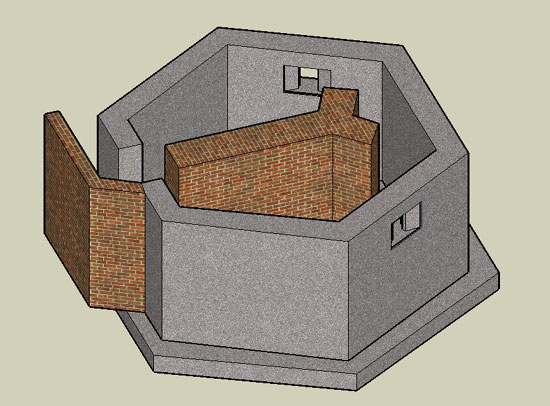
Area models
I've produced two key area models, by which I mean they span hundreds of metres in the landscape. Both were produced with the idea of using them in my talks and they have proved very popular in this regard.
The Cuckmere Haven Model
Sketchup models can be imported into Google Earth and once I'd learned how to do this, I could begin reconstructing the defensive landscape. By using a range of documentary sources I could reinstate lost structures and features back into the landscape.
I wrote about my early Cuckmere Haven models back in 2010; the model flythrough has become a keystone of my talks.
The video below gives an idea of what I've done. This is now six years old, however, and needs a lot of revision as I've improved my techniques and I've been involved with a lot of military archaeology at Cuckmere Haven in recent years.
The Pevensey Castle Model
I produced a model of Pevensey Castle in 2012 showing how pillboxes were built amongst the Roman and Norman ruins.
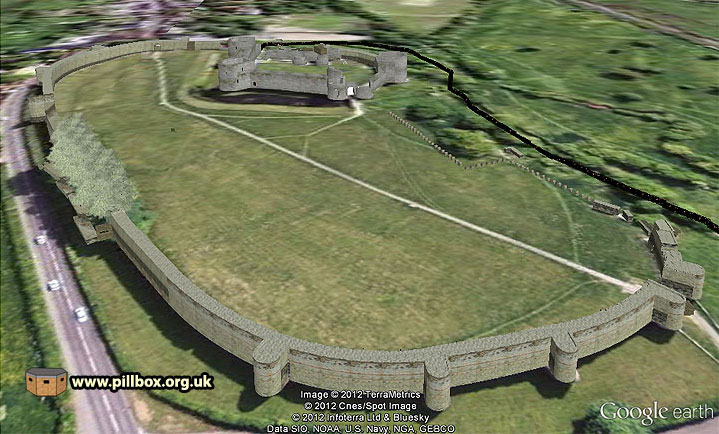
The video flythrough is also a bit shaky due to the rendering process.
Single structures
These include small and large structures, some of which have a blog post devoted to them. Some of my more recent (and better) models you may have seen on Twitter.
Nodal Point roadblock and railblock
This model is based on a real location and shows a roadblock on a bridge, with a railblock on the track below. This model is particularly useful in my talks to demonstrate the strategy behind denying the transport network to the enemy in the event of invasion.
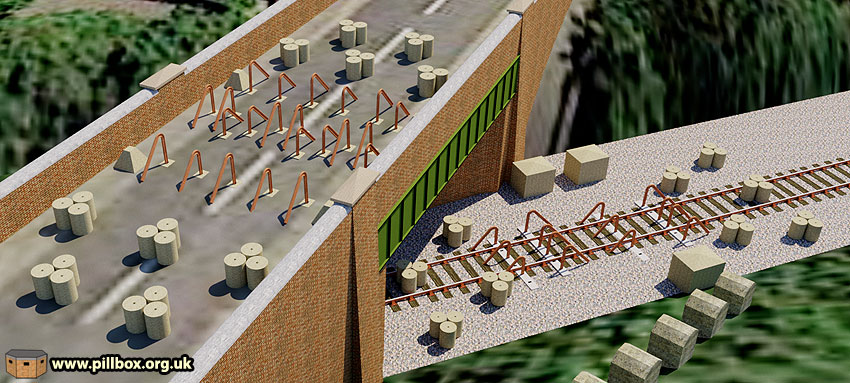
Battle Abbey gatehouse
This model was built to illustrate the path of a German bomb that bounced through the gates of Battle Abbey in 1943; the remains of the UXB are seen on the lawn. Originally the model comprised just the immediate gate area relevant to the bomb's path, based on wartime plans. I then decided to put the incident into a wider context by constructing about three quarters of the building; most of this has been done by eye, rather than scale plans. I will write a piece on this bomb incident to accompany this model in due course.

The Chattri Memorial
The Chattri is a memorial marking the cremation site of 53 Indian soldiers who died in hospitals in Brighton during the Great War. Erected in 1921 on the Downs near Patcham, the memorial suffered damage during the Second World War. I built this model in 2013 to plot this damage.
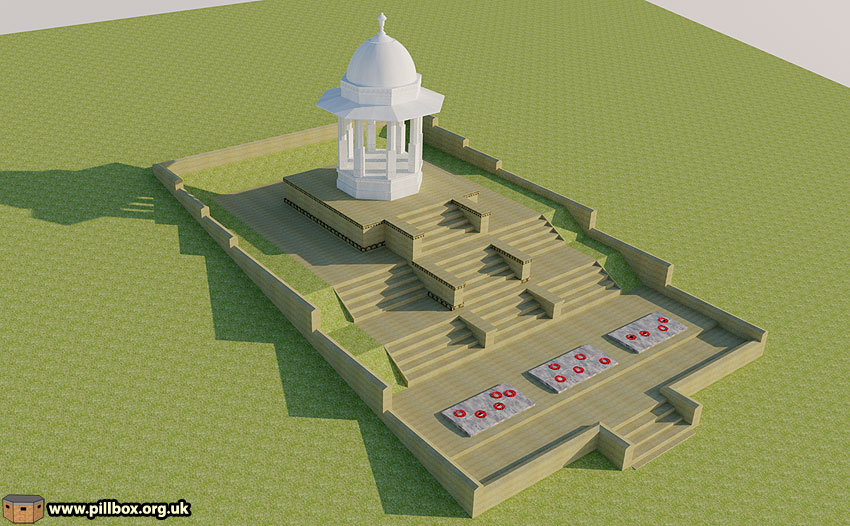
Eastbourne Redoubt
This Napoleonic fortress proved hard to model on account of its complex vaulted and curved brick arches, but I'm happy with the progress I've made so far. The gun deck on the roof is going to throw up a whole new set of problems for me!
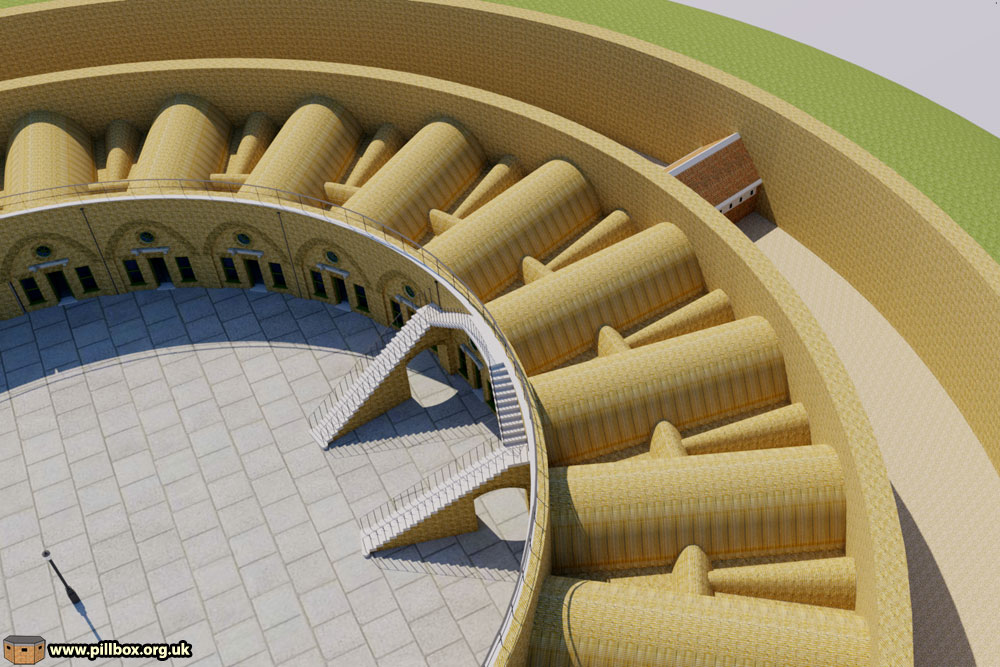
Type 24 Pillbox
I'll finish with this particular model as it revealed valuable data about this type of pillbox. The main subject of this model was a pillbox at Blackham that I surveyed a few years ago, of which I took about 1200 measurements, down to the shuttering marks and concrete pour lines.
Data from neighbouring pillboxes (including the remains of a demolished one that exposed the reinforcement bars) was combined to produce this detailed model. From this, we can calculate the mass of both the rebars and concrete, and the volume of concrete poured in each lift. I've also reconstructed the wooden shuttering.
This is an important reason behind my 3D work; it's not just about putting missing evidence back into the landscape, but also about this sort of analysis that's opening up a whole new area of study for me.
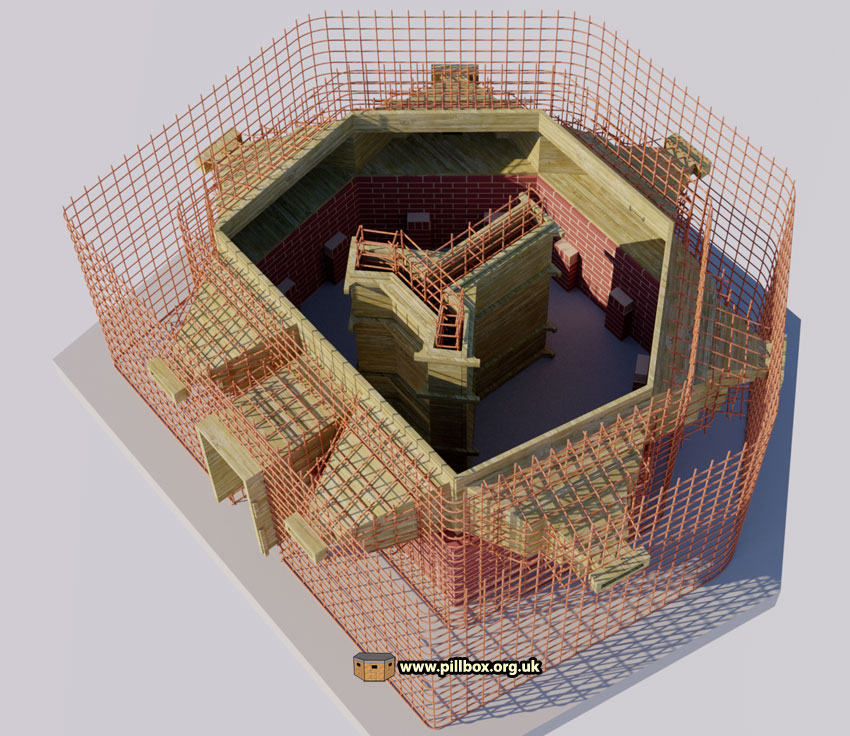
The 25-second animation below shows some of the phases of construction.

Ongoing projects
I have several models on the go at the moment, from air raid shelters to machine guns. Some are based on archaeological survey, while others (such as the pillbox shown below) are based on plans from the archives.
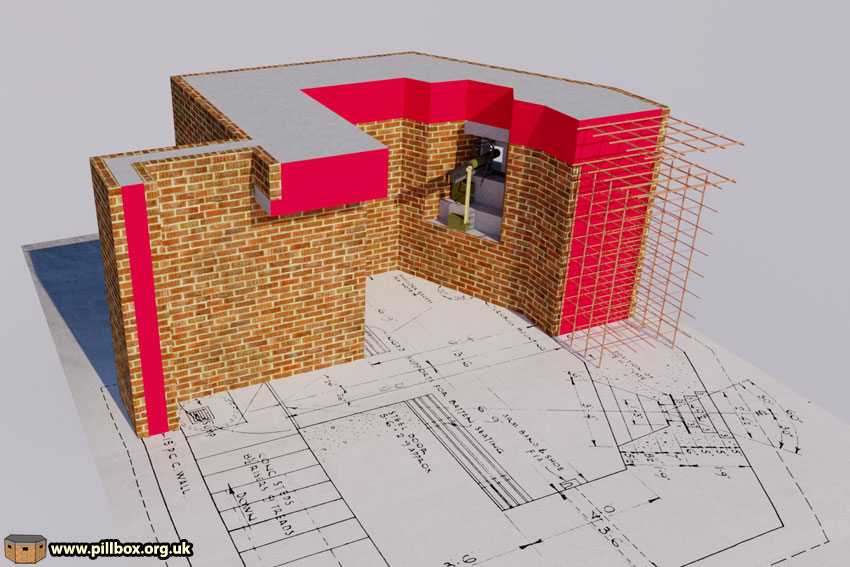
There are too many models scattered throughout my blog and Twitter feed to give them all a mention. But from the selection I've shown you here, I hope you agree that my technique has improved considerably from that odd model at the top of the page!
- Pete

Email:
Blog Latest

Bishopstone reveals its pillbox secrets
18 October 2021

Pillbox or Observation Post?
10 June 2020

Uncovering the hidden secrets of a pillbox
8 June 2019

Review of 2018
31 December 2018

Wartime Christmas in East Sussex (2)
24 December 2018
Jargon-buster
Embrasure
A loophole or slit that permits observation and/or weapons to be fired through a wall or similar solid construction.
Nodal Point
Defended road junction(s), usually within a village/town with a Home Guard garrison intended to deny enemy use of the roads. Nodal Points were not to defend the village, but solely the road network. Category 'A' Nodal Points were to hold out for 7 days after invasion without outside assistance.
Pillbox
Generic term for a hardened field defensive structure usually constructed from concrete and/or masonry. Pillboxes were built in numerous types and variants depending on location and role.

Type 22 pillbox
A small hexagonal pillbox for six men not commonly seen in East Sussex, though a few still survive along the Royal Military Canal stop line.

Type 24 pillbox
A six-sided (but not a regular hexagon) pillbox. The Type 24 is the most frequently seen pillbox in East Sussex, mostly along stop lines. It can be found in thin wall (30cm) or thick wall (1m) variants.
This site is copyright © Peter Hibbs 2006 - 2024. All rights reserved.
Hibbs, Peter 3D models (2024) Available at: http://pillbox.org.uk/blog/244483/ Accessed: 27 July 2024
The information on this website is intended solely to describe the ongoing research activity of The Defence of East Sussex Project; it is not comprehensive or properly presented. It is therefore NOT suitable as a basis for producing derivative works or surveys!